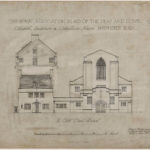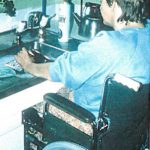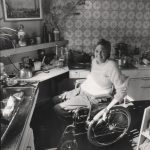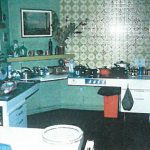Going to hospital, medieval style
Centuries before the NHS, monasteries were a refuge for the sick. Ann Newman is researching the records of one such place, St John’s Canterbury.
 Survey results: deaf and disabled people in the cultural sector,
Survey results: deaf and disabled people in the cultural sector,
 Curating for Change: deaf and disabled people leading in museums,
Curating for Change: deaf and disabled people leading in museums,
 ‘I was always rebelling against the system’,
‘I was always rebelling against the system’,
 BSL introduction to the stories of Deaf people told by the History of Place project,
BSL introduction to the stories of Deaf people told by the History of Place project,
 Take our surveys, help us as we develop a work placement programme,
Take our surveys, help us as we develop a work placement programme,
 Washing up,
Washing up,
 Cooking,
Cooking,
 Typing,
Typing,
 Kitchen at Grove Road – two,
Kitchen at Grove Road – two,
 Kitchen,
Kitchen,
Centuries before the NHS, monasteries were a refuge for the sick. Ann Newman is researching the records of one such place, St John’s Canterbury.
Maxine Clarke on the thrill of holding 14th century vellum – and realising that Chaucer’s Wife of Bath is deaf.
Take part in the pageant on Saturday 9th July. Many of our activities explore the lives of disabled people in the 12th century.
In which Ben McLoughlin finds the good bits in the ‘spectacularly dry’ Chronicles of the Maison Dieu, so you don’t have to…
A visit to what remains of a former medieval building visited by Chaucer and royalty.
Join us at venues including the former medieval hospital at Maison Dieu, St Saviour’s Deaf Church, Normansfield Hospital and Chiswick House – plus many archives.
The volunteer research and archive group visit Canterbury Cathedral. They will be exploring documents going back to the 11th century for stories of deaf and disabled lives in medieval alms houses.
A visit to the English Heritage archaeological store at Dover Castle, where curator Jo Gray shows Francesca Skeleton 19, which gives evidence linking the site to Deaf and disability history.
Maison Dieu is all that remains of a 13th century monastery complex. We can only guess what it looked like for most of that period. Photographs show us that it was still changing with the times, even in the last century.